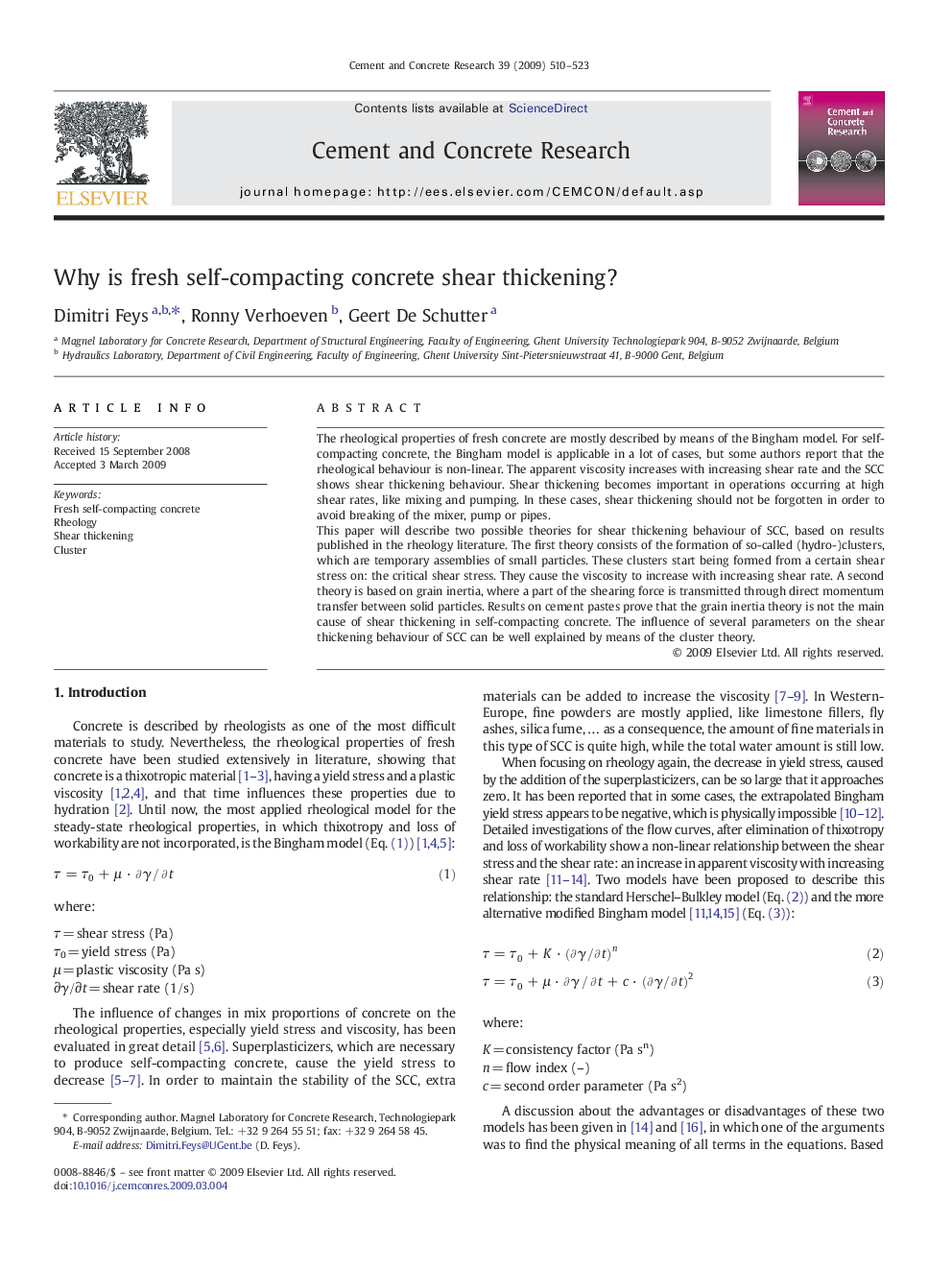| Article ID | Journal | Published Year | Pages | File Type |
|---|---|---|---|---|
| 1457280 | Cement and Concrete Research | 2009 | 14 Pages |
The rheological properties of fresh concrete are mostly described by means of the Bingham model. For self-compacting concrete, the Bingham model is applicable in a lot of cases, but some authors report that the rheological behaviour is non-linear. The apparent viscosity increases with increasing shear rate and the SCC shows shear thickening behaviour. Shear thickening becomes important in operations occurring at high shear rates, like mixing and pumping. In these cases, shear thickening should not be forgotten in order to avoid breaking of the mixer, pump or pipes.This paper will describe two possible theories for shear thickening behaviour of SCC, based on results published in the rheology literature. The first theory consists of the formation of so-called (hydro-)clusters, which are temporary assemblies of small particles. These clusters start being formed from a certain shear stress on: the critical shear stress. They cause the viscosity to increase with increasing shear rate. A second theory is based on grain inertia, where a part of the shearing force is transmitted through direct momentum transfer between solid particles. Results on cement pastes prove that the grain inertia theory is not the main cause of shear thickening in self-compacting concrete. The influence of several parameters on the shear thickening behaviour of SCC can be well explained by means of the cluster theory.
